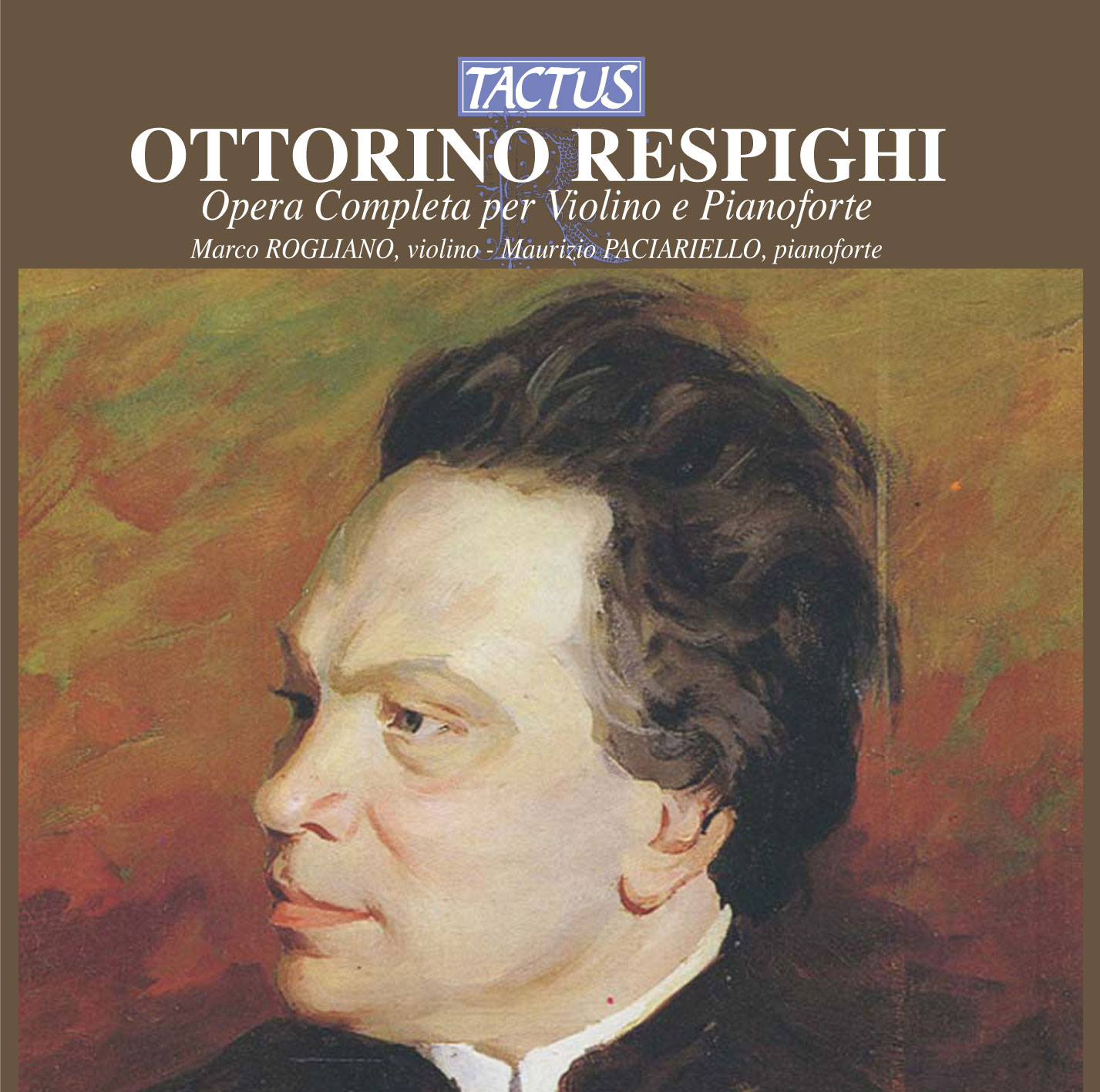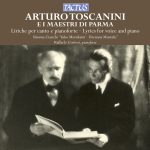RESPIGHI OTTORINO
Listening to Respighi’s complete works for violin and piano, an important part of his chamber works, might hold some surprises.
First of all, this complete recording includes the virtually unknown Sonata in re minore, composed at the age of 18, as well an unpublished Albumblatt, the Allegretto vivace.
Then there is the expressive atmosphere, indicative of the musical training of a composer who would be considered one of the most important representatives of the Novecento Storico in Italy.
The young Respighi, though possessing a natural facility for playing numerous instruments (violin, viola, viola d’amore, piano), began as a violinist and made a name for himself as such in his early years.
A pupil of the excellent teacher and first violinist of the Quartetto Bolognese, Federico Sarti, Respighi contemporarily attended the composition class of Luigi Torchi, a musicologist as well as composer of the European school (having studied with Reinecke in Leipzig, among others).
At his diploma in composition in 1901, he was personally presented by the director of the musical Liceo, Giuseppe Martucci, a key figure in the field of instrumental music in Italy and largely responsible for the particularly vivacious climate and attention paid to instrumental music in Bologna at that time.
Respighi’s compositions for violin and piano date from the first twenty years of his career as a composer, from 1897 to 1917.
The two outer dates correspond to the two sonatas: the first written at a very early age, the second during a period of artistic maturity coinciding with his first important symphonic poem, Fontane di Roma.
In between lie the two cycles of characteristic pieces that so typically define a genre of the period respected by Respighi, unlike some of his other illustrious contemporary colleagues.
The general panorama of his works for violin thus leads to certain considerations concerning not only his musical development but also his poetics.
The latter, though notoriously tied to common elements of the music of the twentieth century—the almost impressionistic sense of orchestral timbres, the recuperation of the ancient, an aestheticizing stylization—is however rooted in a relationship with the previous century.
Tracklist
Respighi, Ottorino
5 Pezzi, P. 62
1 - No. 1. Romanza (3:49)
2 - No. 2. Aubade (2:37)
3 - No. 3. Madrigale (3:52)
4 - No. 4. Berceuse (2:58)
5 - No. 5. Humoresque (5:41)
Violin Sonata in B Minor, P. 110
6 - I. Moderato (10:07)
7 - II. Andante espressivo (8:47)
8 - III. Passacaglia: Allegro moderato ma energico (8:06)
Allegretto vivace, P. 186
9 - Allegretto vivace (1:54)
Disco n.2
Respighi, Ottorino
Violin Sonata in D Minor, P. 15
1 - I. Lento - Allegro (9:36)
2 - II. Adagio (7:00)
3 - III. Scherzo: Allegretto (5:21)
6 Pezzi, P. 31
4 - No. 1. Berceuse (3:37)
5 - No. 2. Melodia (3:00)
6 - No. 3. Leggenda (6:10)
7 - No. 4. Valse caressante - No. 5. Serenata (6:55)
8 - No. 6. Aria (5:51)
- Composer: RESPIGHI OTTORINO
- Performers: Marco Rogliano, violino · Maurizio Paciariello, pianoforte
- Historical Period: Romanticism
- Code: TC 871890
- Edition: NOVEMBER 2008
- Barcode: 8007194200126
- Set: 1
- Total tracks: 17
- Total duration: 01:35:11






